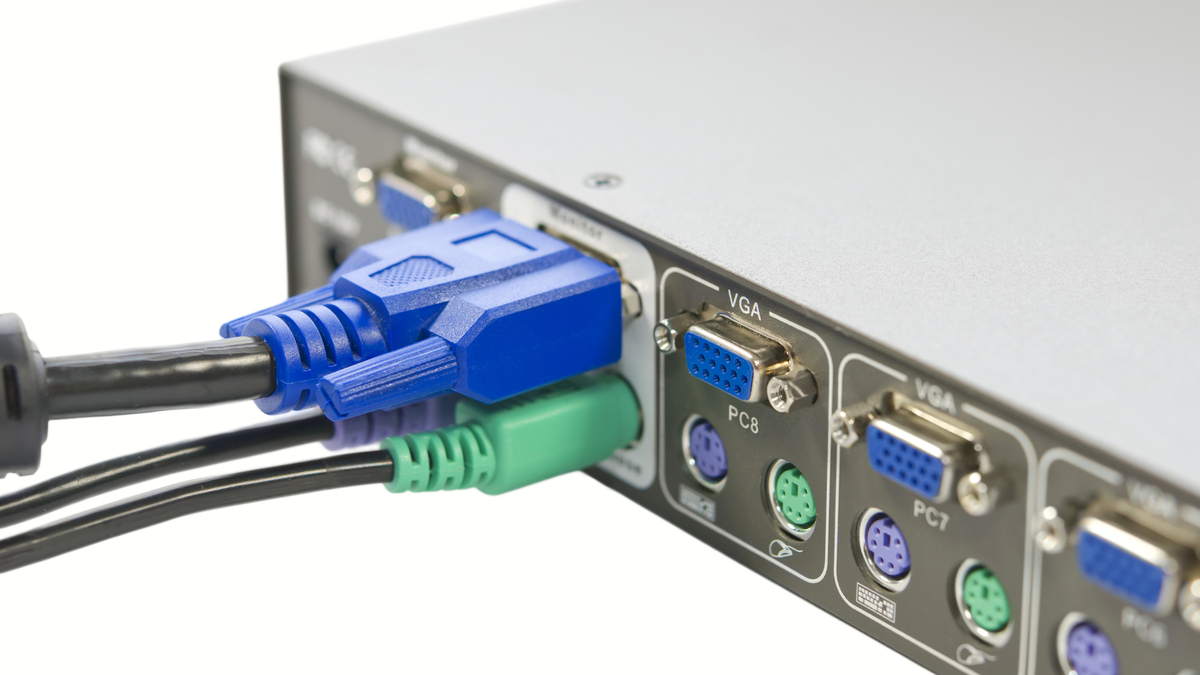What is a KVM switch?
If you use multiple computers, your array of mice, keyboards, and monitors can quickly spiral out of control. KVM switches can keep the number of devices to a minimum using relatively simple hardware or software. Let’s see how they work.
What is a KVM switch and how does it work?
Simply put, a KVM switch allows you to switch between different computer sources (or computer cases) while using the same keyboard, monitor, and mouse; in fact, that’s what KVM stands for: keyboard, video, mouse. This means that if you have multiple PCs to work with, you don’t need to buy separate monitors, keyboards and mice for each PC. Instead, you just need to buy one of each and use the switch to switch between PCs.
That being said, the term KVM is a bit of a misnomer, and while the original KVM switches only managed these three switches, modern switches often manage more, including things like audio and USB ports. There are even KVM switches that switch between a single input, like this Gana 3-Port HDMI Switch, though they’re usually referred to simply by the data they handle, such as an audio switch or keyboard switch.
So how exactly do they work? Well, plug-and-play technology didn’t exist back then, so every time you wanted to change your keyboard or mouse, you had to restart the computer so that the processor could detect all the devices. Although that’s no longer the case, KVM switches still do something similar in that they trick the processor into thinking there’s a connection, so when you do eventually switch, anything goes good.
The way it does this is a bit complex, but basically it emulates computer peripherals and constantly maintains a “false” signal. When you switch, the KVM switch replaces the emulated signal with your actual device signal, providing a smooth, imperceptible transition.
Types of KVM Switches Explained
KVM switches tend to come in two main types: hardware and software.
Hardware switches are the most common and the type you are most likely to encounter or use. For example, consumer KVMs can usually switch between two and four sources, although some can go as high as eight, and they tend to be marketed a little more to those running small offices or businesses. For large enterprises, some of the larger KVM switches can go up to 64 and are sometimes connected to a server running many virtual machines that multiple people need to access.
Along with the number of sources you can switch between, there is also the type of video, with the most common KVM switches being for VGA. Fortunately, KVM switches with HDMI and Display Port are becoming more common, but they tend to be a bit more expensive than VGA switches.
Another option is how many monitors you want to support, with one being the most common option and three being available, although rare. Again, you’re unlikely to find an HDMI KVM that handles two or more monitors, although the technology will become more mainstream at the time of writing in early 2022. Perhaps in a few years we might see HDMI as the default, rather than VGA, at least in the consumer market.
As for software KVM switches, they are also a bit of a misnomer, as they generally do not support monitor switching and are therefore technically KM switches. They work by installing an application on your computer that lets you directly control a mouse and keyboard on any computer connected to your network. These tend to be quite handy in large companies with many servers that need to be checked by several different IT people and administrators.
Do I need a KVM switch?
KVM switches can be very handy for personal use, although you’re looking at spending around $50 on the lower end, like this PWAY KVM, it largely depends on your usage. If you find yourself constantly switching back and forth between two PCs, the $50 entry cost could very well be worth it. Or, if you don’t have a lot of desk space and can only fit one monitor, mouse, keyboard, a KVM switch can be a great investment.
An affordable KVM switch

KVM Switch 4 Port HDMI Enclosure
Easily control four different systems with this KVM switch that supports HDMI connections and won’t break the bank.
Another option is to use KVM software and only have one additional monitor running; this way you at least save space and still be able to functionally use your other PC source.
If you run a business that tends to manage a large number of servers or machines, a KVM switch can also be very useful, especially software, as it allows you to access devices remotely, saving you the hassle of move in place.
RELATED: How to control multiple PCs with one keyboard using Synergy


Comments are closed.